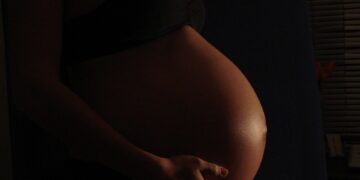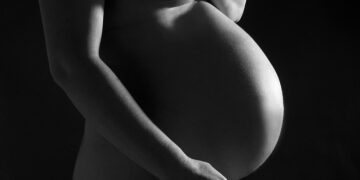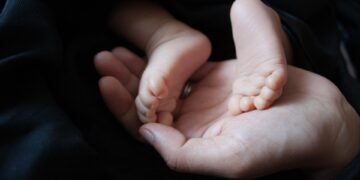The Essential Guide to Keeping Your Newborn Safe: A Parent’s Cornerstone of Peace of Mind
Welcoming a newborn into the world is a joyous occasion that comes with a great deal of responsibility. As a parent, ensuring the safety and well-being of your little one is your top priority. From creating a safe sleep environment to baby-proofing your home, there are a number of steps you can take to protect your newborn and give yourself peace of mind. In this essential guide, we will cover everything you need to know to keep your newborn safe and secure.
Creating a Safe Sleep Environment
One of the most important aspects of newborn safety is ensuring that your baby has a safe sleep environment. The American Academy of Pediatrics recommends that infants sleep on their backs on a firm mattress with no soft bedding or toys in the crib. Make sure that your baby’s crib meets current safety standards and is free of any loose or broken parts. Avoid using crib bumpers, as they can pose a suffocation risk to your newborn. Keep the room at a comfortable temperature and dress your baby in light, breathable clothing to prevent overheating.
Baby-Proofing Your Home
As your baby grows and becomes more mobile, it’s important to baby-proof your home to prevent accidents and injuries. Install safety gates at the top and bottom of stairs, secure heavy furniture to the wall to prevent tipping, and cover electrical outlets with safety plugs. Keep small objects out of reach of your baby to prevent choking hazards, and always supervise your little one around water, whether it’s in the bathtub or a swimming pool. By taking these precautions, you can create a safe environment for your newborn to explore and play in.
Ensuring Safe Transportation
When it comes to transporting your newborn, safety is paramount. Make sure that your baby is securely buckled into a properly installed car seat every time you travel in a vehicle. The car seat should be rear-facing and placed in the back seat of the car. Follow the manufacturer’s guidelines for weight and height limits, and never place a car seat in the front seat of a vehicle with an active airbag. Additionally, avoid leaving your baby unattended in a car, even for a short period of time.
Preventing SIDS
Sudden Infant Death Syndrome (SIDS) is a leading cause of death in infants under the age of one. While the exact cause of SIDS is unknown, there are steps you can take to reduce the risk. In addition to creating a safe sleep environment for your baby, avoid exposing your newborn to smoke, both during pregnancy and after birth. Breastfeeding, offering a pacifier at bedtime, and keeping your baby’s immunizations up to date can also help lower the risk of SIDS. By following these guidelines, you can help protect your newborn from this tragic and devastating condition.
Recognizing Signs of Illness
It’s important to be aware of the signs of illness in your newborn so that you can seek medical attention promptly if necessary. Common signs of illness in infants include fever, difficulty breathing, persistent crying, vomiting, diarrhea, and lethargy. If you notice any of these symptoms in your baby, contact your pediatrician right away. Trust your instincts as a parent and don’t hesitate to seek medical help if you’re concerned about your newborn’s health.
Building a Support System
Parenting a newborn can be overwhelming at times, so it’s important to have a support system in place to help you navigate the challenges that come with caring for a little one. Reach out to family and friends for assistance, whether it’s help with household chores, emotional support, or just someone to talk to. Joining a parent support group or online community can also provide you with valuable resources and a sense of camaraderie with other parents who are going through similar experiences. Remember that you’re not alone in this journey, and there are people who are willing to help and support you along the way.
Conclusion
Keeping your newborn safe is a parent’s cornerstone of peace of mind. By creating a safe sleep environment, baby-proofing your home, ensuring safe transportation, preventing SIDS, recognizing signs of illness, and building a support system, you can protect your little one and give yourself peace of mind as you navigate the joys and challenges of parenthood. Remember that safety is an ongoing process, and it’s important to stay informed and proactive in safeguarding your newborn’s well-being. With the right knowledge and preparation, you can provide your baby with the safest and most nurturing environment possible.
By following the guidelines outlined in this essential guide, you can take the necessary steps to keep your newborn safe and secure. With a little preparation and vigilance, you can give yourself peace of mind knowing that you’re doing everything you can to protect your precious little one. Parenthood is a journey filled with love, joy, and responsibility, and by prioritizing your baby’s safety, you can create a foundation for a strong and healthy future together.









































